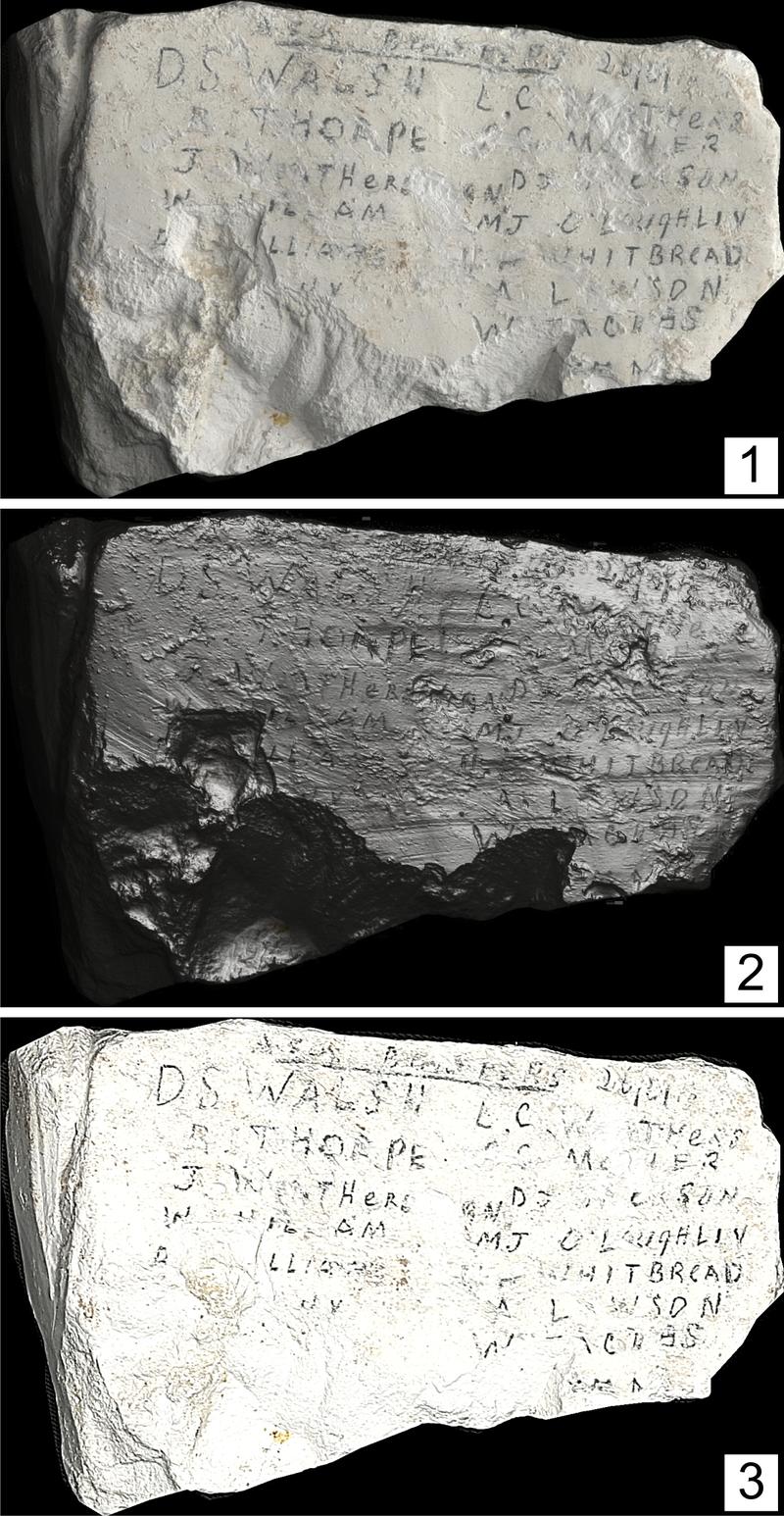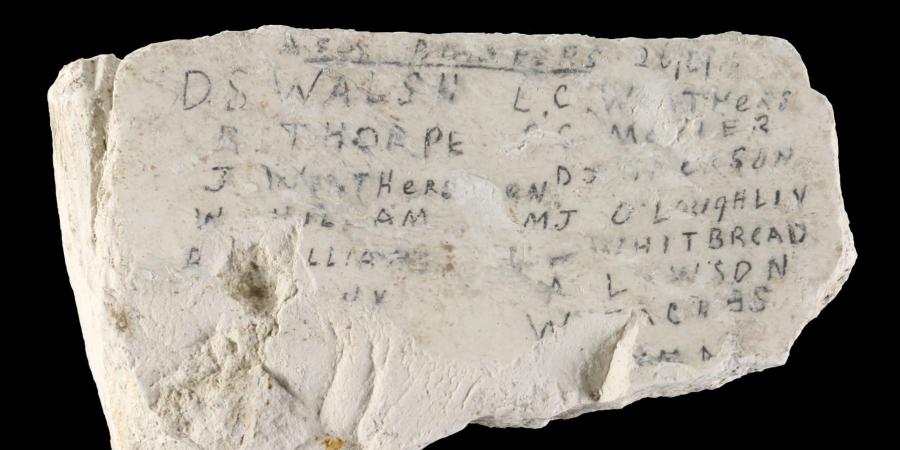This chalk block was recovered from WW1 practise trench systems at Larkhill, Salisbury Plain. This work is in advance of new Army housing and has revealed extensive trench systems and tunnels cut into the chalk. Soldiers passing through Larkhill for training before being sent to the western front have also left their mark.
A chalk block was recovered with names written in pencil. Due to the soft nature of the chalk and surface damage, some of the names were not clear. It was decided to try RTI in order to see if the graphite used in the pencil would provide a reflective quality which would highlight hidden written detail. This would assess RTI ability to see applied surface detailed rather than inscribed.
When viewed in default (image 1), the viewer can see a flat image of with no enhanced definition. When viewed under specular enhancement (image 2) surface detailing becomes apparent. Here we can see that the surface of the block has been deliberately prepared by using an implement to smooth the surface. Horizontal marks can be seen, possibly created using a knife blade. It is also possible to see that the actual pencil has partially inscribed the surface. With this render mode it is possible to see letters that have since lost some or all of the graphite. Under specular enhancement graphite did not reflect. However, when viewed with unsharp mask render mode (image 3) a high degree of contrast picks out the graphite from the chalk background.
This case study has shown that graphite does not show clearly on soft chalk. However, due to the soft nature of the chalk, it was possible to see inscribed letters as shallow grooves.


